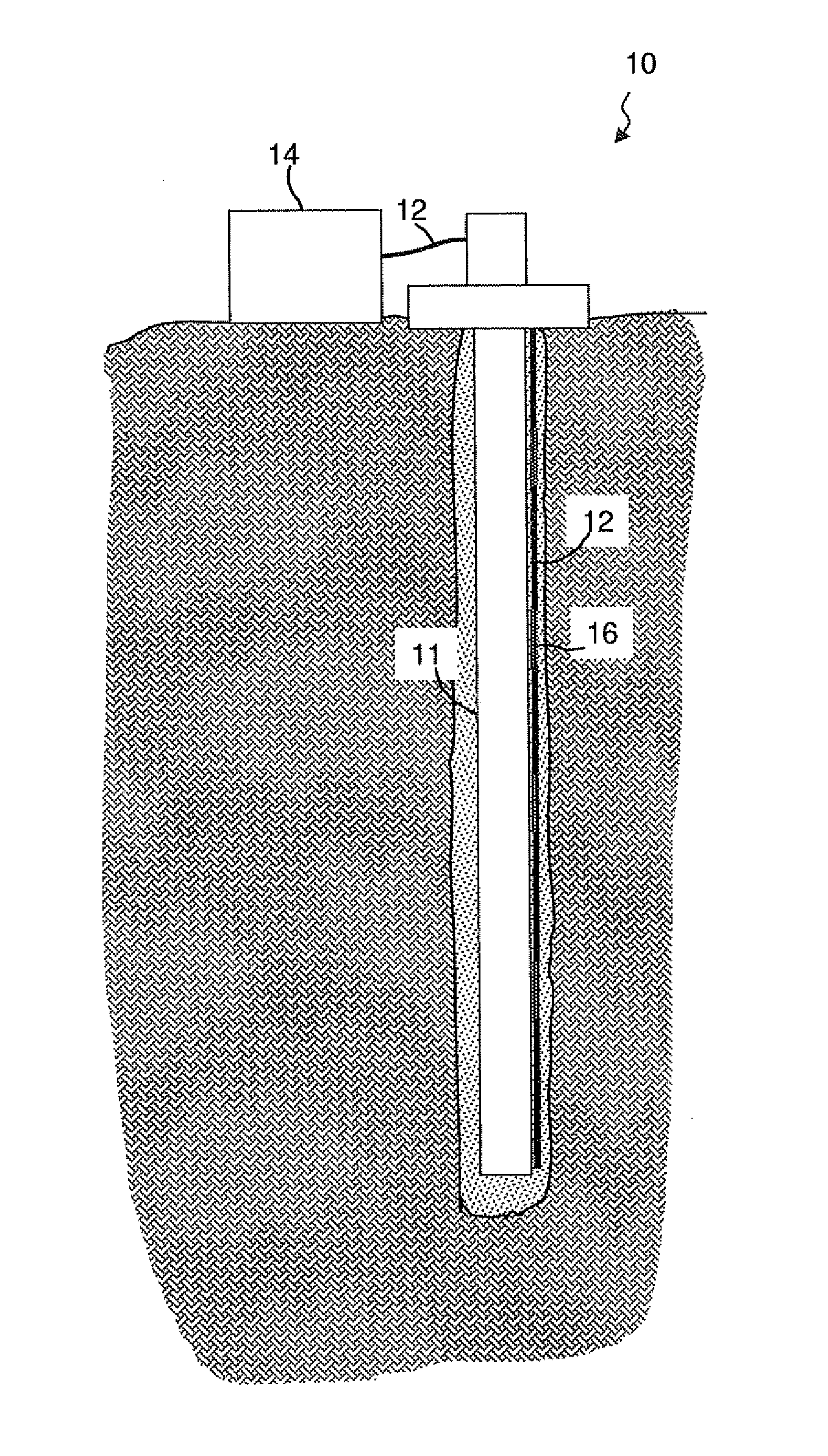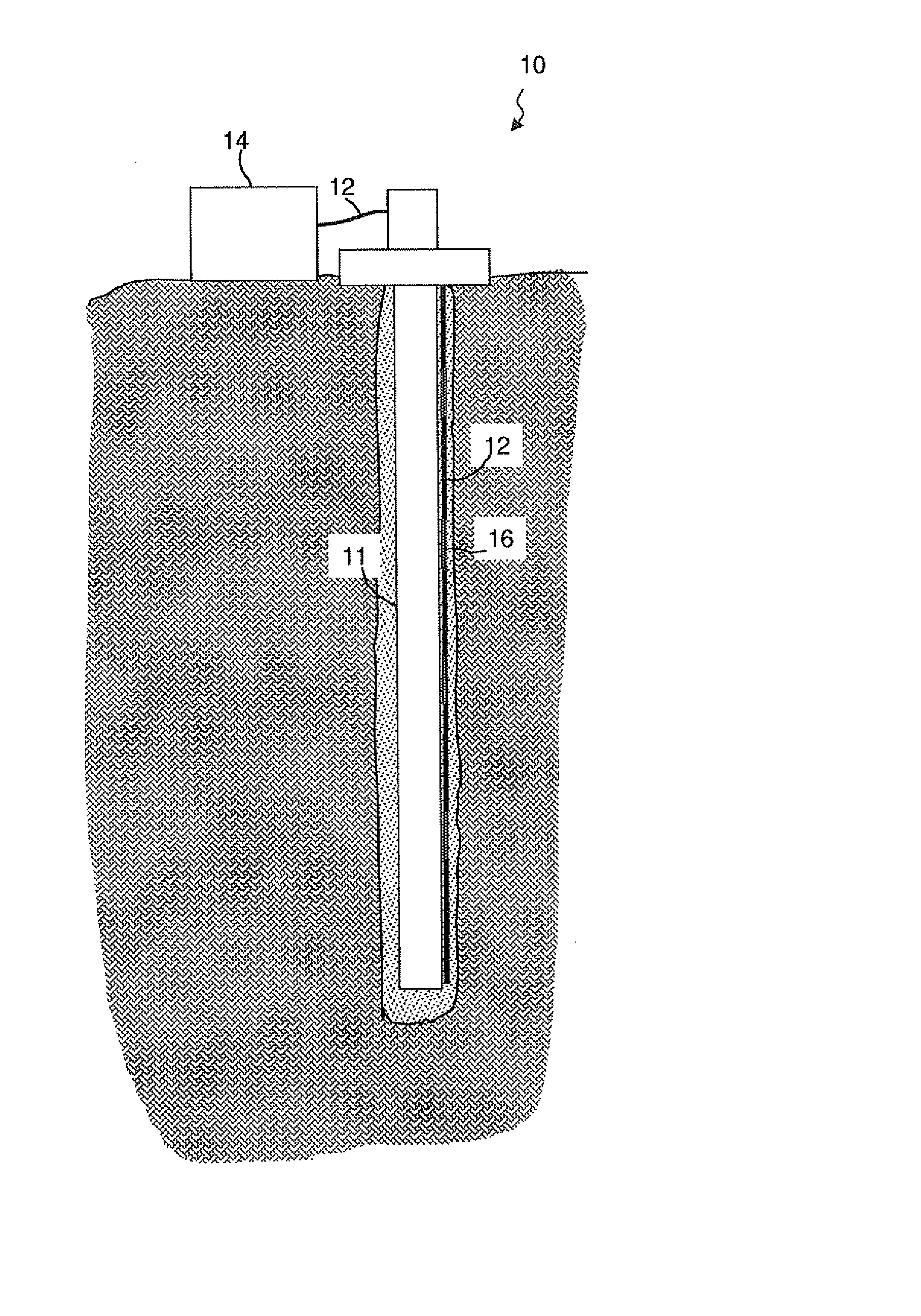Method and system for determining the location of a fiber optic channel along the length of a fiber optic cable
a technology of fiber optic cable and location method, which is applied in the field of method and system for determining the location of a fiber optic channel along the length of a fiber optic cable, can solve the problems of small changes in the fiber, insufficient calculation accuracy, and inability to produce backscattered light signals
- Summary
- Abstract
- Description
- Claims
- Application Information
AI Technical Summary
Benefits of technology
Problems solved by technology
Method used
Image
Examples
Embodiment Construction
[0021]The present invention relates generally to a system and a method that allows the physical location of backscattered signals in a fiber optic cable to be determined with precision.
[0022]Referring initially to the FIGURE, a well 10 contains a fiber optic cable 12 that follows the well. Cable 12 is optically coupled at one end to a light box 14, such as are known in the art. Cable 12 may be double-ended, i.e. may be bent in the middle so that both ends of the cable are alternatively connected to the light source, or it may be single-ended, with one end at the source and the other end at a point that is remote from the light source. In the embodiment illustrated in the FIGURE, well 10 contains a tubular 11, such as a casing or liner. Cable 12 is run into the well in conjunction with tubular 11 and cement is pumped into the annulus between the tubular and the wellbore, thereby mechanically coupling cable 12 to the formation.
[0023]It will be understood by those skilled in the art th...
PUM
 Login to view more
Login to view more Abstract
Description
Claims
Application Information
 Login to view more
Login to view more - R&D Engineer
- R&D Manager
- IP Professional
- Industry Leading Data Capabilities
- Powerful AI technology
- Patent DNA Extraction
Browse by: Latest US Patents, China's latest patents, Technical Efficacy Thesaurus, Application Domain, Technology Topic.
© 2024 PatSnap. All rights reserved.Legal|Privacy policy|Modern Slavery Act Transparency Statement|Sitemap


